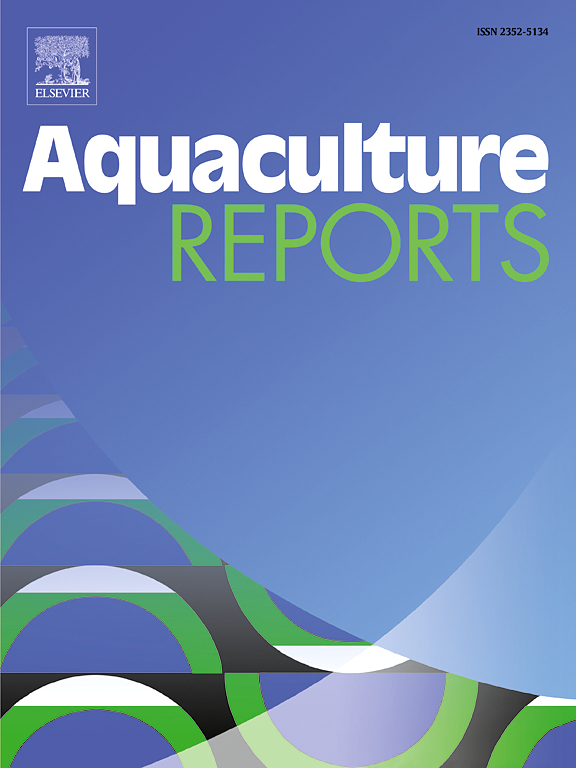Unlocking the potential of nutmeg oil: A sustainable alternative for rainbow trout anesthesia in aquaculture
IF 3.2
2区 农林科学
Q1 FISHERIES
引用次数: 0
Abstract
In aquaculture, interest in natural anesthetic agents as alternatives to synthetic anesthetics has been steadily increasing. This is due to concerns over residue accumulation, environmental impact, and growing demand for sustainable practices. Within this context, the present study focused on the anesthetic effects of nutmeg essential oil at three different concentrations in rainbow trout (Oncorhynchus mykiss, 94.42 ± 23.9 g): low (400 µL/L), medium (600 µL/L), and high (800 µL/L). Induction and recovery times were recorded, and samples were collected at 0, 2, 4, and 8 hours post-anesthesia for antioxidant, cortisol, and hematological analyses. Additionally, gill tissues were sampled immediately after anesthesia for histological examination. While the induction time for the low concentration exceeded 3 minutes, the induction and recovery times for the other concentrations ranged within acceptable limits (3 min for induction and 5 min for recovery). Blood parameters exhibited an increasing trend until the 4th hour post-anesthesia, peaking at the 2nd hour, before returning to control levels by the 4th hour. Histological evaluation revealed healthy gill tissues in the control and low-concentration group (400 µL/L), whereas hyperplasia was observed in the medium (600 µL/L) and high-concentration (800 µL/L) groups. Antioxidant enzyme activity (superoxide dismutase (SOD), catalase (CAT), malondialdehyde (MDA), and glutathione peroxidase (GSH-Px)) indicated potential oxidative stress at the high anesthetic concentration. Similarly, cortisol levels were higher at the high concentration, with plasma cortisol showing a slight initial increase followed by a return to normal levels over time. In conclusion, this study highlights that nutmeg oil at a concentration of 600 µL/L may serve as a promising natural alternative to synthetic anesthetics in aquaculture. However, future studies should include a synthetic anesthetic as a control to allow for direct comparisons and a more comprehensive evaluation of its efficacy and physiological effects.
求助全文
约1分钟内获得全文
求助全文
来源期刊

Aquaculture Reports
Agricultural and Biological Sciences-Animal Science and Zoology
CiteScore
5.90
自引率
8.10%
发文量
469
审稿时长
77 days
期刊介绍:
Aquaculture Reports will publish original research papers and reviews documenting outstanding science with a regional context and focus, answering the need for high quality information on novel species, systems and regions in emerging areas of aquaculture research and development, such as integrated multi-trophic aquaculture, urban aquaculture, ornamental, unfed aquaculture, offshore aquaculture and others. Papers having industry research as priority and encompassing product development research or current industry practice are encouraged.
 求助内容:
求助内容: 应助结果提醒方式:
应助结果提醒方式:


